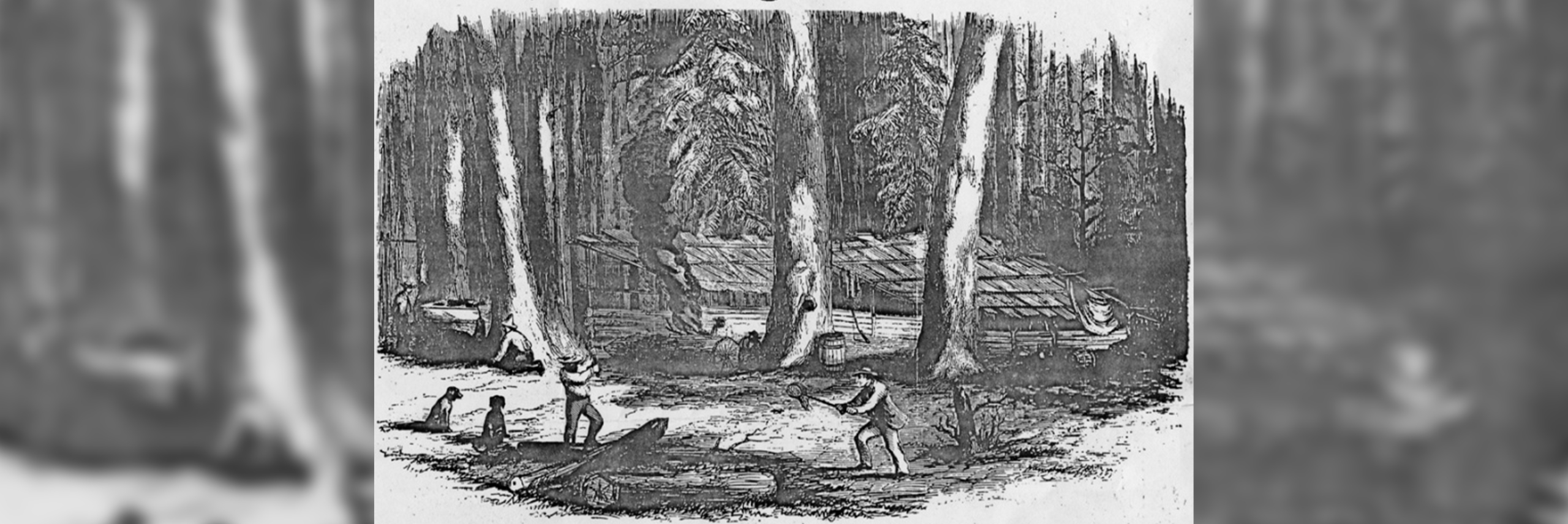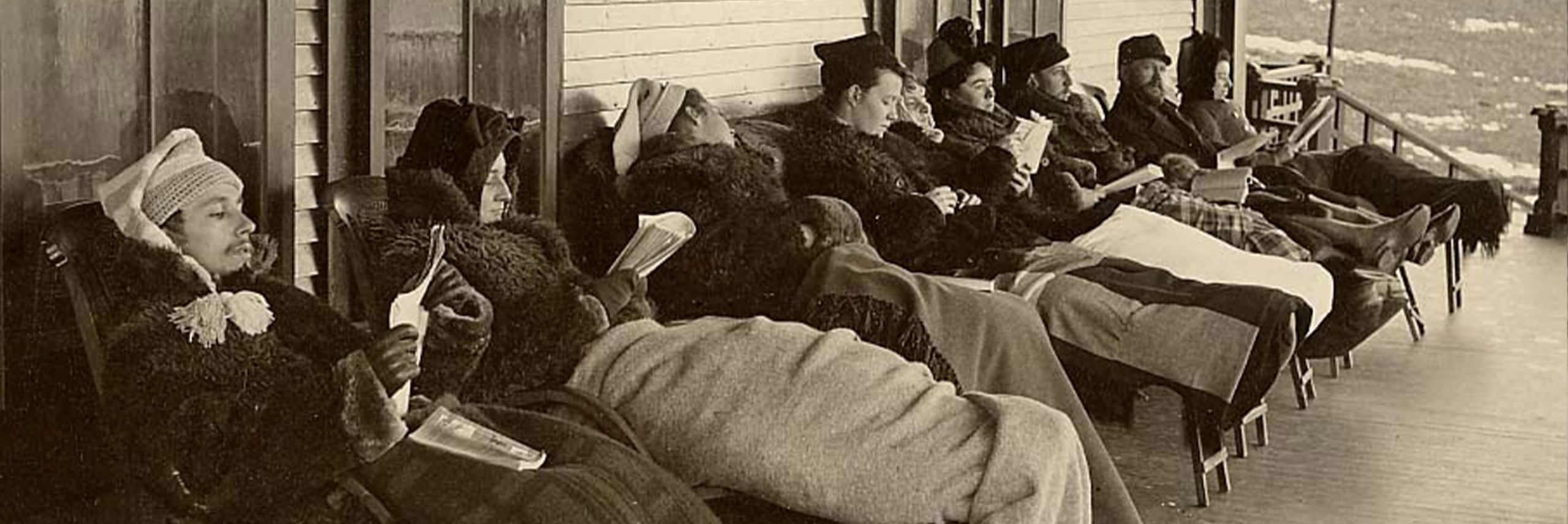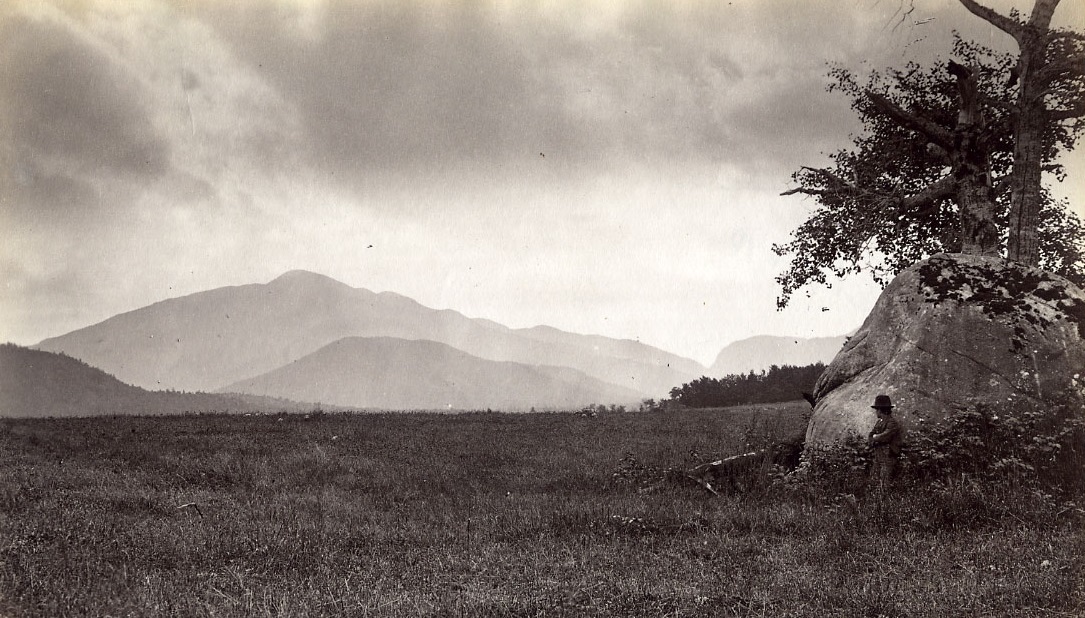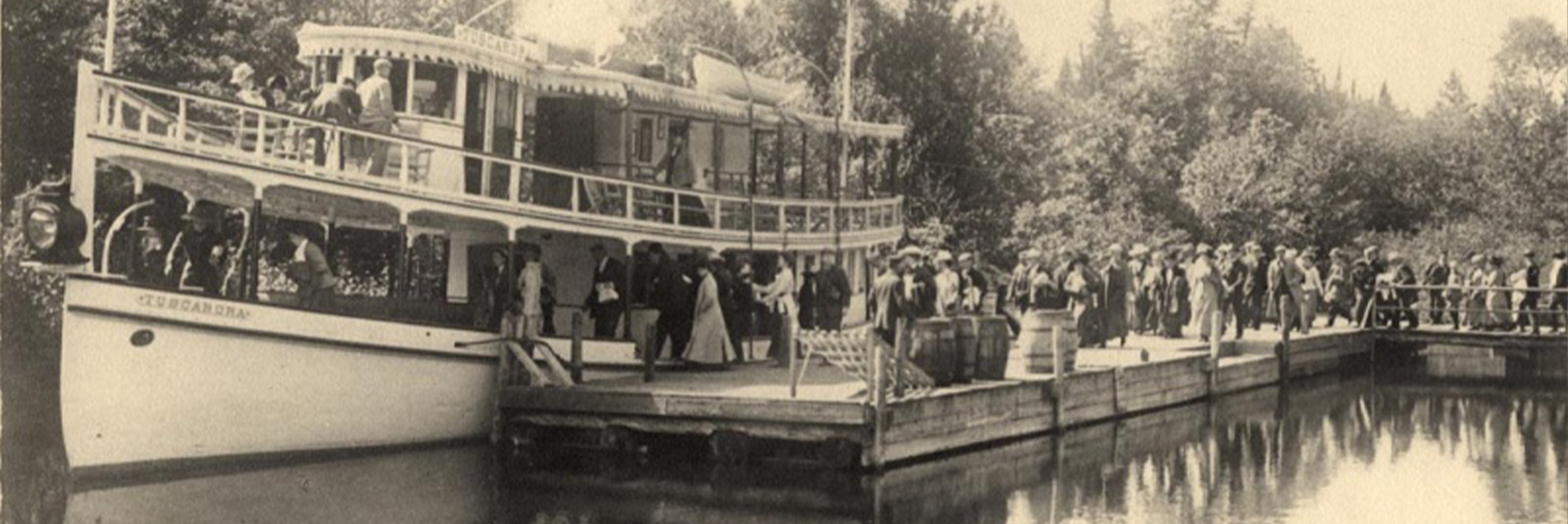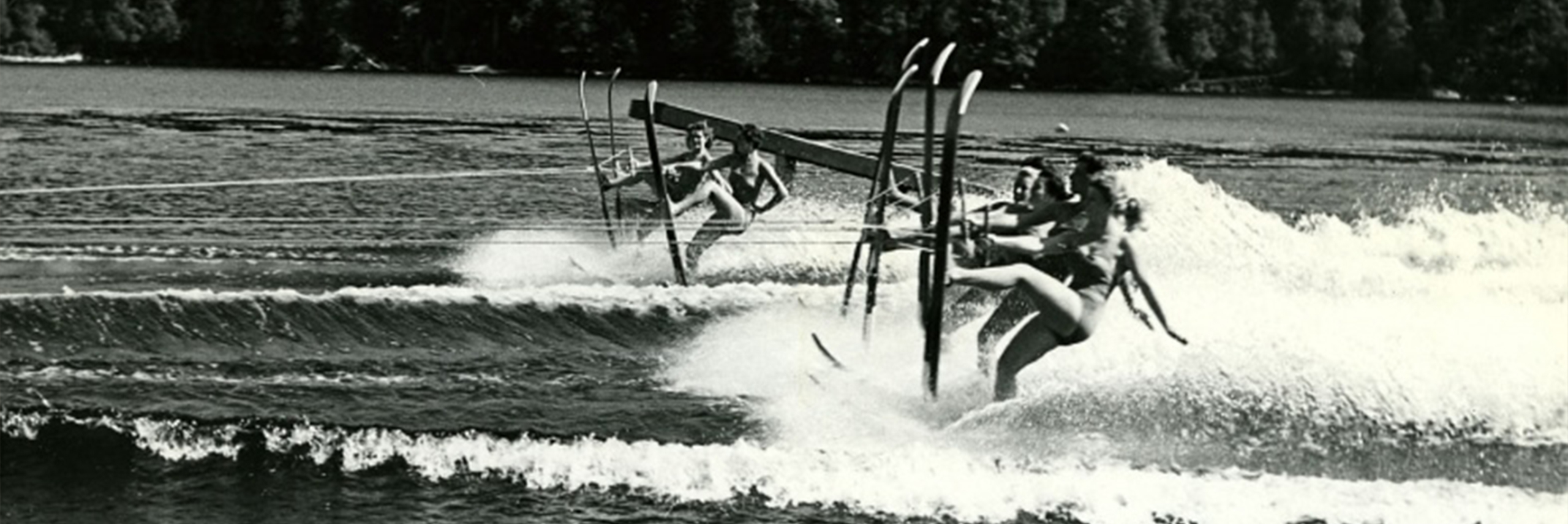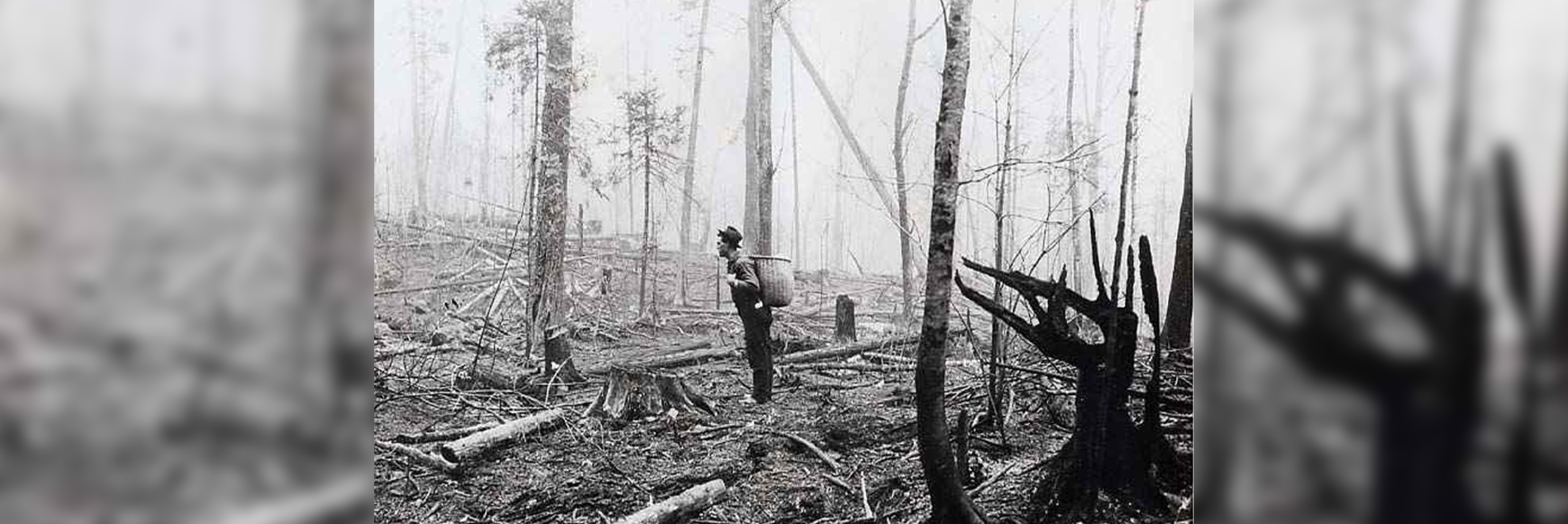The Philosophers' Camp at Follensby Pond
In the summer of 1858 an expedition of ten scholarly men from Cambridge and Boston, Massachusetts embarked on a trip to Follensby Pond in the Adirondacks, creating what came to be known as the Philosophers’ Camp at the shore of the pond.
Follensby Pond is located in the southwest corner of Harrietstown, New York between Raquette Falls and Tupper Lake. The name of the pond has been spelled many ways in the past; during the time the philosophers visited the area, it was spelled Follensbee. Some early Adirondack guidebooks also referred to it as Folingsby. The pond is named for a recluse known as Captain Folingsby who left England for unknown reasons around 1820. He sought seclusion in the Adirondacks and settled at the pond that is now his namesake. The proper spelling of his name is unknown, thus the variations in spelling.
The group constructed a rough structure built entirely of materials at hand. The lodging consisted of three spruce bark walls supported by two trees, and contained a fireplace and beds fashioned from evergreen branches topped with soft fragrant cedar.
The trip is remembered not only for the well-known artists and intellectuals who ventured together into the Adirondack wilderness but also for the lasting impact on the region and notions of preservation.
In spite of the name that became associated with the outing, the men were not necessarily “philosophers” by training or occupation. The party consisted of two poets, Ralph Waldo Emerson and James Russell Lowell; two scientists, Louis Agassiz and Jeffries Wyman; two lawyers, Ebenezer Hoar and Horatio Woodman; two doctors, Estes Howe and Amos Binney; John Holmes, the younger brother of writer Oliver Wendell Holmes, and William James Stillman.
William James Stillman an artist, writer, and skilled woodsman who had made many trips to the Adirondacks, organized the philosophers’ trip. He first visited the “Northern Wilderness” in 1854 to find more exciting subjects for painting than were available in his native Schenectady and developed a great affinity for the area.
After founding The Crayon, the first art magazine in America, Stillman traveled to Cambridge in search of financial support and to solicit subscriptions, articles and poems. He was introduced to poet James Russell Lowell and made new contacts, many of which would travel with him to the Adirondacks in 1858.
Each member of the party held decidedly different views and came from various intellectual standpoints. However, they all seemed to share a romantic and intellectual reverence for nature and a common view of the importance of natural beauty to artistic and intellectual creativity. These views would be represented in their art and writing and be used to demonstrate the value of preserving the natural beauty of the Adirondack wilderness.
The Philosophers’ Club traveled to the Adirondacks at a time when common notions of wilderness were rapidly shifting. Earlier views held that land only needed to be attended to for capital gains based on what could be garnered through farming, mining, and other acts that would return a profit. By the middle of the nineteenth century, there was a swing in intellectual thinking that demonstrated a belief in the spiritual power of the beauty of landscape and wilderness to inspire. There was a sense that nature provided an escape from the responsibilities of urban living.
Each member of the camp sought to ensure their own unique experience with the tranquility of the Adirondacks and the ability to individually interact with the “serene wilderness.” The month the scholars spent at Follensby Pond was occupied with hunting, fishing, paddling, studying plants and animals, and exploring the country. For a brief period, the quiet shores of Follensby Pond rang with lively conversation and debate.
This was also a time of creation; Emerson penned his poem “The Adirondacks” a poetic description of the trip, while Stillman chronicled the experience in his painting “The Adirondack Club.” Agassiz discovered a previously unknown freshwater sponge on the trip to Follensby.
The following fall there was great interest in further Adirondack expeditions. This attraction generated the formal organization of the Adirondack Club. Stillman was appointed the task of finding a permanent location for the club. At the time he was very ill suffering a bronchial attack and unable to travel further than the Saranac Lake region. He enlisted the help of local guides to map a tract of 22,500 acres for purchase. For $600 he acquired a section of wilderness on Ampersand Pond south of the Saranac Lakes that had been forfeited to the state and placed on sale.
“Camp Maple” was built and the club expanded, adding to its membership many prominent intellectuals from Boston and Cambridge. However, the summer of 1859 would be its most popular; the Civil War intervened and the club was neglected.
The philosophers’ time and creative work in the Adirondacks would contribute to a shifting view of nature and preservation. Their work provided evidence of the importance and value of preserving wild places as a source of inspiration and national heritage. Many of their ideas are still echoed in current discussions about preservation. The site of their first camp on Follensby Pond carries on this discussion. The Nature Conservancy’s recent purchase of Follensby Pond has renewed debate over preservation and the economic reality of the state’s role in this process.
Land preservation in the Adirondacks is a timely topic of conversation as trying economic times coincide with concerns over environmental degradation. While the discussion has moved past the philosophers’ goal of simply maintaining beautiful natural places, their views are still at the heart of this debate.


